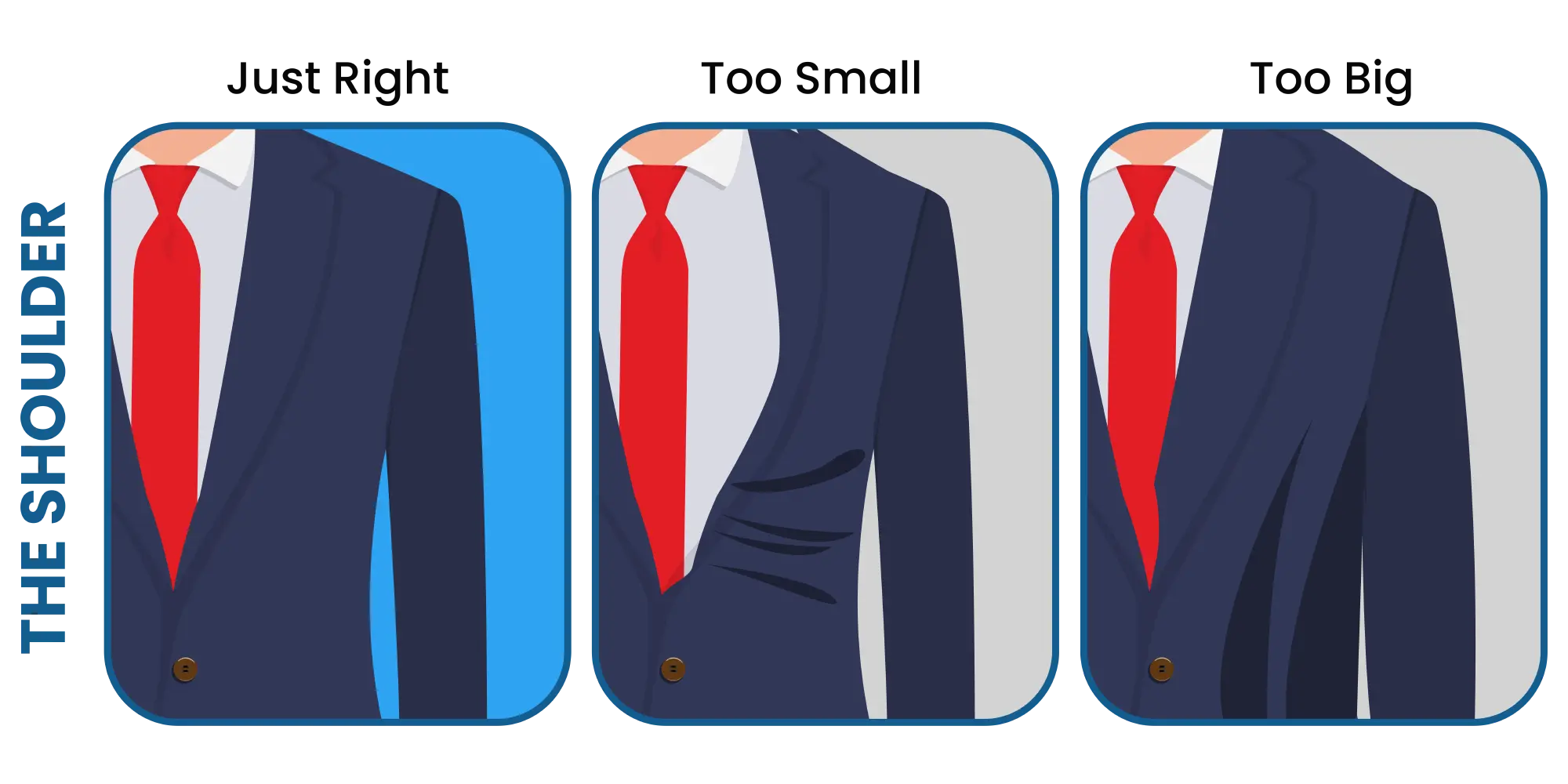There’s nothing quite like a well-fitted suit. It exudes confidence, professionalism, and timeless style. But just as a great suit can make you stand out for all the right reasons, a poorly styled or ill-fitting one can have the opposite effect. Unfortunately, even the most expensive suits can look off if common details are overlooked. In today’s world, where suit-wearing is often reserved for important events and high-stakes impressions, you can’t afford to get it wrong. From a collar gap that ruins your silhouette to a poor fitting suit that makes you appear sloppy, the mistakes are many, but they’re also preventable.
This essential guide walks you through the most common suit mistakes men make, and more importantly, how to avoid them. Whether you’re dressing for a wedding, a job interview, or your daily office routine, these tips will help you avoid looking like you’re wearing the worst suit in the room. Mastering suit etiquette and fit is the difference between simply wearing a suit and truly owning it.
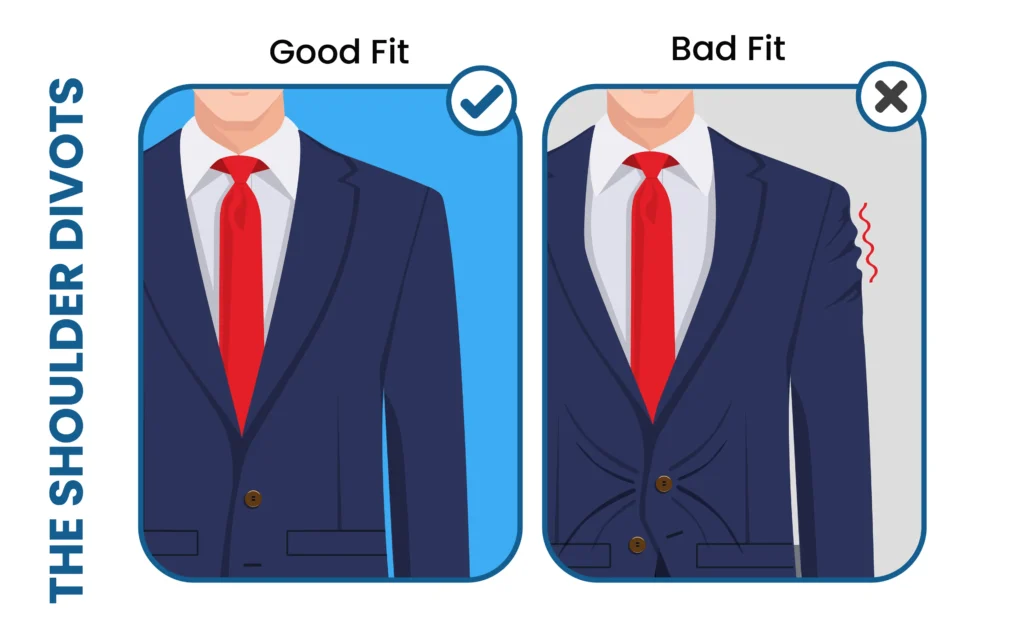
Fit is Everything
When it comes to wearing a suit, fit is king. No matter how luxurious the fabric or trendy the cut, a poor fitting suit will always betray you. It can make you look uncomfortable, unkempt, and even unprofessional, three things you never want your outfit to communicate.
Let’s take a closer look at two of the most common and most damaging fit issues
1. The Poor Fitting Suit
The most frequent mistake men make is choosing a suit that doesn’t fit their body. Sometimes it’s too tight, causing fabric to pull across the chest or thighs. Other times, it’s too loose, making the wearer look like he borrowed his older brother’s clothes.
Signs of a poor fitting suit include:
- Shoulder seams that extend past your natural shoulder line
- Wrinkles or pulling near the buttons when the jacket is closed
- Trousers that sag, bunch at the ankle, or ride too high
- Jacket sleeves that completely cover your shirt cuffs (or reveal too much)
Why it matters:
A poor fitting suit distorts your posture and throws off the entire balance of your look. It doesn’t matter how much it costs; if the proportions are wrong, it’s not working.
How to fix it:
Invest in tailoring. Even an off-the-rack suit can look custom-made with the right alterations. A small adjustment to the waist, sleeves, or trousers can turn a clumsy outfit into a sharp, streamlined look.
2. The Collar Gap Suit
Another subtle, but critical error is the collar gap. This occurs when the collar of your suit jacket doesn’t sit flush against the collar of your shirt. Instead, there’s a noticeable space or gap, usually at the back of the neck.
What causes a collar gap?
- A poorly made or low-quality jacket
- Incorrect posture (slouched shoulders or forward head)
- Jacket shoulders that don’t align with your frame
- Shirt collars that are too stiff or too large
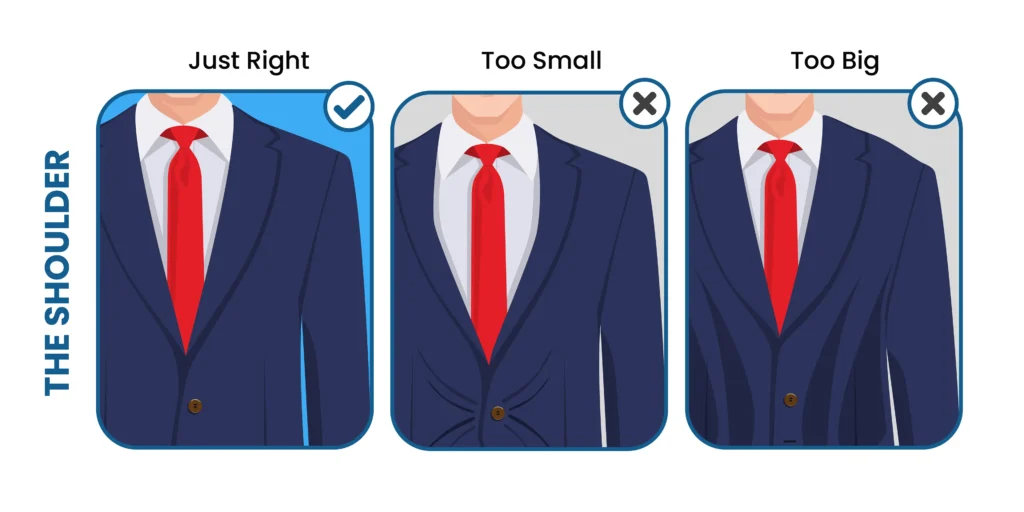
Why it’s a problem:
A collar gap throws off your entire neckline, making the suit look ill-fitted, even if the rest of it fits well. It also draws attention away from your face and creates a sloppy profile.
How to fix it:
Always try on the jacket with a proper dress shirt. If you see a gap, don’t ignore it. A skilled tailor can often adjust the collar or shoulder area to correct the issue, or advise if it’s better to start with a new suit altogether.
Avoiding these foundational mistakes is the first step toward a suit that works with your body, not against it. Because when the fit is off, everything else follows,
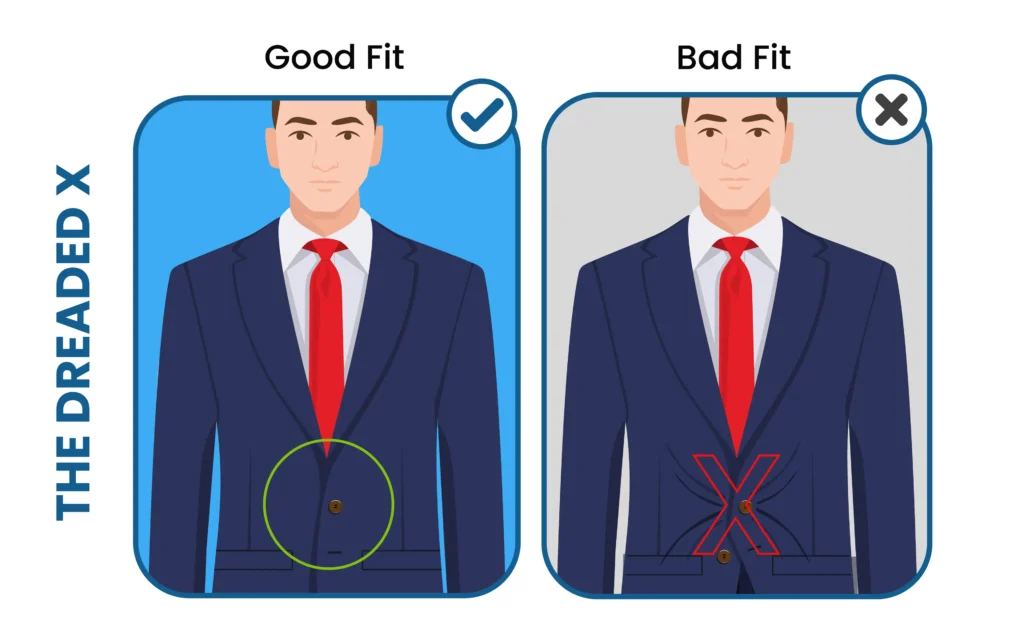
Style Slip-Ups
Once you’ve nailed the fit, the next hurdle is style, and this is where many fall into traps that can instantly downgrade their look. These style mistakes aren’t always obvious at first glance, but they silently chip away at your presentation and can leave you looking mismatched, awkward, or like you’re trying too hard.
Here are three common style slip-ups every man should avoid when wearing a suit:
1. Mismatched Jacket and Trousers
Wearing a suit jacket with pants that aren’t part of the same set is a gamble, one that often backfires unless you’re intentionally going for a smart separate look (and even then, it requires finesse).
What goes wrong:
- Slight differences in fabric or shade become glaringly obvious under indoor lighting
- The fit and structure between the two pieces may clash
- It can make your outfit look thrown together, not tailored
The fix:
If you’re going for separates, contrast them clearly (e.g., a navy jacket with grey trousers). But for formal occasions, always stick to matching suit sets. Anything less risks looking like the worst suit combination of the evening.
2. Over-accessorizing or Under-accessorizing
Accessories are powerful, but only when used with balance. Some men wear too many, and others forget them altogether.
Common mistakes:
- Pairing a bold tie with a flashy pocket square and statement cufflinks, all at once
- Forgetting a pocket square, making the jacket look unfinished
- Wearing novelty pins or loud socks in formal settings
The fix:
Keep it simple. Choose one standout accessory, like a textured tie or a patterned square, and let the rest complement it. In formal settings, lean toward minimal, classic accessories.
3. Wearing the Wrong Shoes
Shoes can make or break your suit. The wrong pair instantly ruins the overall tone, no matter how expensive the suit is.
Common mistakes include:
- Casual loafers or chunky dress shoes with slim, modern suits
- Sneakers with traditional formalwear
- Mismatched shoe colors (e.g., light brown shoes with a black suit)
The fix:
Pair sleek, polished shoes with your suit. Black or dark brown oxfords are safe, versatile choices. Match the formality and color tone of your suit, and always make sure your shoes are clean and in good condition.
Making just one of these mistakes can throw your entire outfit off-balance. But avoiding them ensures your suit communicates what it should: confidence, attention to detail, and effortless style.
Fabric, Color, and Season — Knowing What Works
Even the best-fitted, well-accessorized suit can lose its appeal if the fabric or color clashes with the weather, setting, or occasion. One of the most overlooked areas of suit etiquette is choosing the right material and tone for the right time. Get this wrong, and even a stylish ensemble can turn into one of the worst suits of the day.
Let’s look at three easy-to-miss mistakes and how to avoid them.
1. Wearing the Wrong Fabric for the Season
A common suit mistake is selecting a suit fabric that fights against the climate rather than working with it.
Examples of seasonal mismatches:
- Wearing a thick wool suit on a sweltering day
- Choosing a lightweight linen suit in the middle of winter
- Donning a velvet jacket to a midday outdoor event
Why it matters:
Aside from comfort, the wrong fabric can visibly work against your appearance, making you look sweaty, stiff, or out of place.
Suit etiquette tip:
- Summer: Go for lightweight fabrics like linen, cotton, or tropical wool.
- Winter: Choose heavier materials like tweed, flannel, or heavier wool blends.
- Year-round: Stick with medium-weight worsted wool, which works in most environments.
2. Choosing the Wrong Color for the Occasion
Color sends a message, and the wrong message can affect how you’re perceived. Just because a suit fits doesn’t mean its color is appropriate.
Common color mistakes:
- Wearing a black suit to a daytime event (looks too severe)
- Opting for loud, flashy colors in a conservative office environment
- Choosing pastel tones for evening wear, which can appear too casual or underdressed
The fix:
Stick to classic, versatile tones — navy, charcoal, and grey, especially for work and formal settings. Reserve brighter colors and patterns for creative or relaxed environments, and black suits for evening or somber occasions (like formal dinners or funerals).
3. Ignoring Texture and Season Together
Even when color and cut are right, the texture of your suit plays a seasonal role.
- Velvet or corduroy suits are best in fall and winter.
- Shiny materials like satin can feel out of place in daylight settings.
- Crisp cotton or linen suits may wrinkle easily and look sloppy by the end of a formal evening event.
Quick tip: When in doubt, ask yourself: Does this fabric make sense for the time of day, temperature, and setting? If not, reconsider.
Mastering the balance between fabric, color, and context ensures you’re wearing a suit that not only fits but belongs. It’s a subtle skill, but one that separates timeless dressers from those stuck in the realm of the worst suits.
Neglecting Suit Etiquette
Wearing a suit is about more than just looking good; it’s about carrying yourself with a sense of polish and respect for detail. That’s where suit etiquette comes in. Sadly, even the best-dressed men sometimes miss these finer points, and it can turn a great outfit into a forgettable (or embarrassing) one.
Here are some of the most common suit etiquette mistakes, and how to avoid them
1. Leaving the Stitching or Brand Tags On
It may sound obvious, but many people forget to remove:
- The brand label sewn onto the jacket sleeve
- The X-stitches on the jacket vents or breast pocket
Why it’s a problem:
Leaving these on signals inexperience, and makes the suit look like it was borrowed or not properly prepared. It’s a rookie mistake that instantly pulls attention away from the rest of your look.
The fix:
As soon as you buy a suit, carefully remove any visible tags or stitches (or ask your tailor to do it during alterations).
2. Button Rules: Know When to Fasten and When Not To
Suit buttoning is basic etiquette, yet it’s one of the most misunderstood.
Here’s the rule for a two-button suit:
- Top button: Always fasten when standing.
- Bottom button: Never fasten.
For a three-button suit:
- Top: Optional
- Middle: Always
- Bottom: Never
And when you sit down? Always unbutton your jacket. This prevents fabric from pulling and keeps the silhouette sharp.
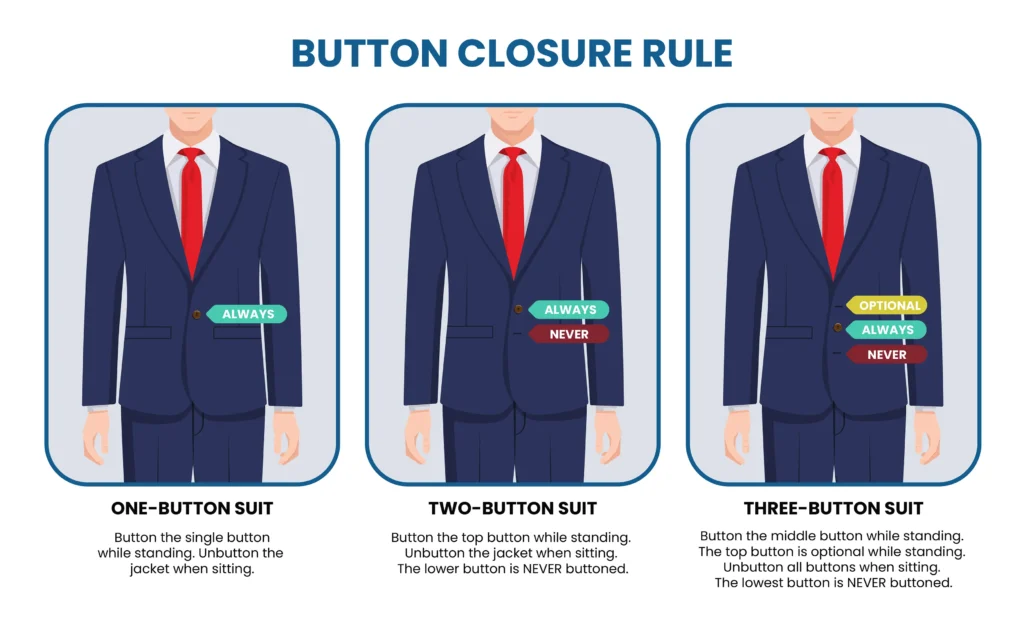
3. Shirt Sleeve and Jacket Length
Your jacket sleeves should allow about half an inch of your shirt cuff to show. It adds contrast and shows attention to detail, a hallmark of good tailoring.
Common mistakes:
- Jacket sleeves that cover the entire shirt cuff
- Shirt sleeves too long, hanging under the jacket like a tunic
Suit etiquette tip:
Get your sleeves altered if needed. A visible cuff is one of the simplest, most stylish details of a properly worn suit.
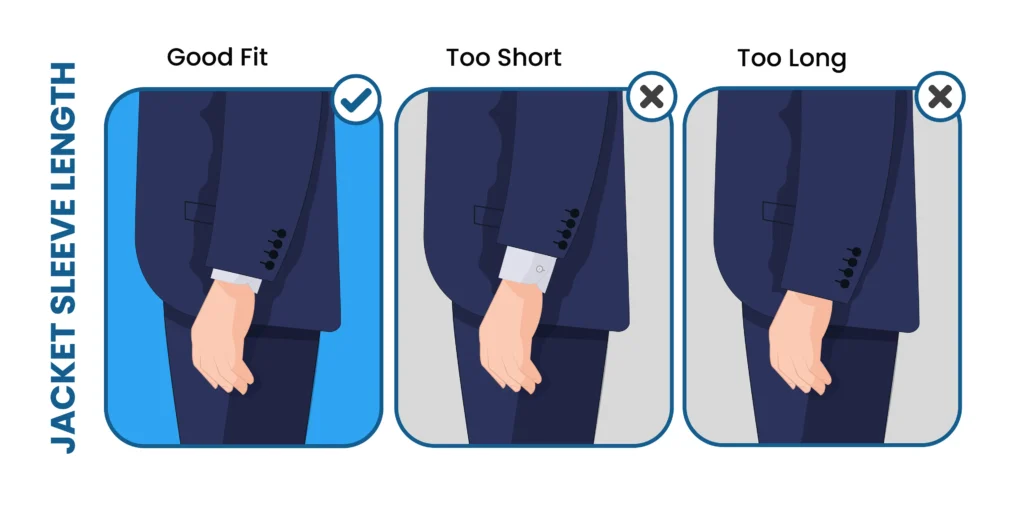
4. Wearing a Suit Casually, Without Adjusting the Details
You may want to dress down your suit (e.g., with sneakers or a T-shirt). While this is a growing trend, it requires precision. Many make the mistake of going halfway, formal trousers with a sloppy tee, or a dress shirt with undone buttons and no care for grooming.
The fix:
If you’re dressing down a suit, do it with intention. Swap the shirt for a fine knit or turtleneck. Choose clean, minimal sneakers. Keep everything else sharp, including grooming and fit.
Ignoring the finer points of suit etiquette doesn’t just break rules, it breaks the balance of the look. These small touches are often the difference between a confident, well-dressed gentleman and someone in a good suit that still doesn’t look quite right.
Wearing a Suit Like It’s a Costume
Wearing a suit should feel natural, not like you’re playing dress-up. Unfortunately, many people fall into the trap of treating their suit like a costume: overly formal for the occasion, styled with exaggerated flair, or worn with stiff discomfort. The result? A look that feels forced, not refined.
Let’s explore three ways this happens and how to avoid them.
1. Ignoring the Occasion
One of the most common suit mistakes is overdressing or misjudging the formality of the event.
Examples:
- Wearing a three-piece suit to a casual business lunch
- Showing up in a tuxedo-inspired ensemble to a semi-formal wedding
- Donning a pinstripe power suit at a laid-back social event
Why it matters:
A suit should complement the tone of the gathering. If you’re too formal (or too flashy), you might appear disconnected or trying too hard.
How to avoid it:
Research the dress code or ask the host. For most events, a two-piece navy or grey suit is a safe, versatile choice. Save three-piece suits, bold pinstripes, or statement pieces for when the occasion clearly calls for it.
2. Overly Flashy or Trendy Styles
Style evolves, but when you chase trends too hard, like bold checkered patterns, cropped trousers, or ultra-skinny lapels, your suit risks looking like fashion theater.
Worst suits offences include:
- Loud, high-shine suits in unusual colors
- Overly tight jackets that strain at the button
- Excessive embellishments or branded accessories
The fix:
Keep your base classic: solid colors, timeless cuts, clean details. You can introduce personality through subtle textures or accessories, not by turning your outfit into a spotlight.
3. Lack of Confidence or Poor Posture
Even the best suit can’t cover up discomfort. If you’re fidgeting, slouching, or adjusting constantly, you’ll look like you’re wearing someone else’s clothes.
Common giveaways:
- Tugging at sleeves or lapels
- Standing stiffly or walking awkwardly
- Constantly checking yourself in mirrors or your phone
The solution:
Wear suits more often. Confidence grows with familiarity. Practice walking, sitting, and standing in a suit so it feels like a second skin, not special occasion armor. Stand tall, relax your shoulders, and let the suit serve you, not the other way around.
Wearing a suit well is about comfort, confidence, and appropriateness. Avoid the urge to turn your outfit into a costume. Instead, aim for authenticity, an elegant expression of your personal style that suits both you and the moment.
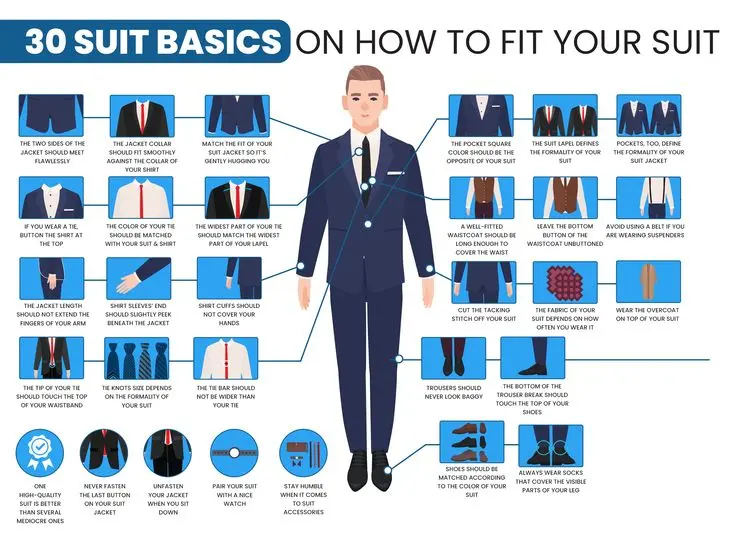
Conclusion
Suits have long been a symbol of elegance and sophistication. But pulling off the look isn’t just about owning one, it’s about wearing it well. From a poor fitting suit to a distracting collar gap, from mismatched colors to forgotten stitching, the little things make a big difference.
We’ve explored the most common suit mistakes, from ignoring suit etiquette to treating a suit like a costume, and shown how these missteps can turn even expensive attire into the worst suit in the room. Thankfully, every one of these errors is avoidable.
Here’s the truth: a great suit doesn’t need to be flashy or expensive, just well-fitted, well-maintained, and worn with awareness and confidence.
So the next time you put on a suit, remember:
- Pay attention to fit
- Dress for the occasion
- Keep your look balanced and appropriate
- Respect the tradition, but don’t be afraid to own your style
Avoid these common pitfalls, and your suit won’t just make you look good; it’ll make you feel like your best self.

